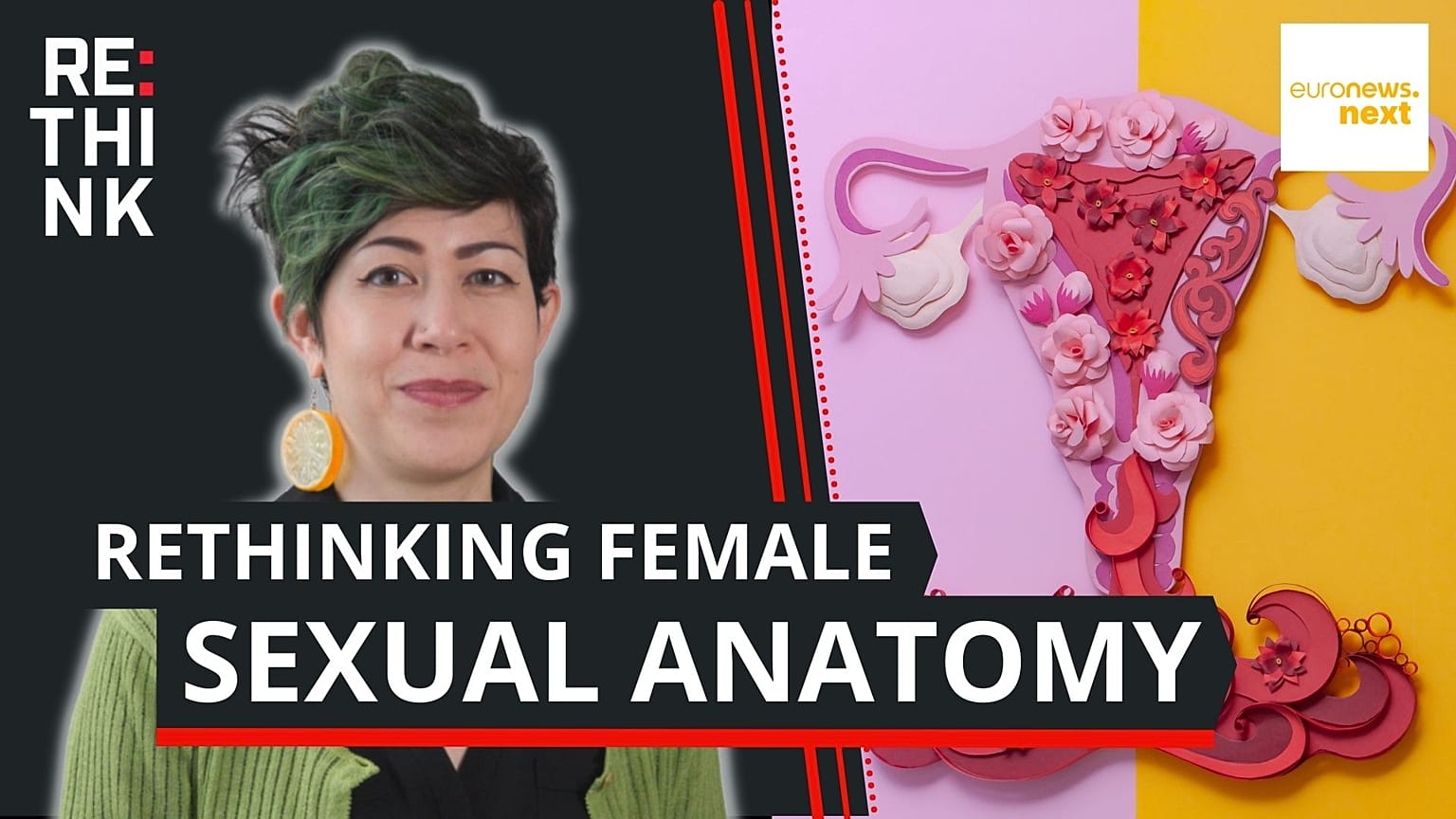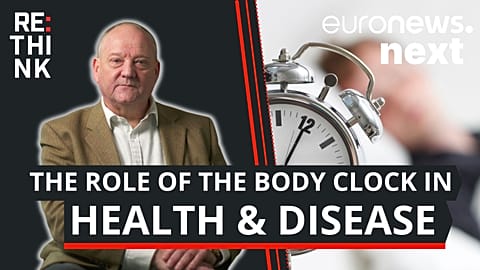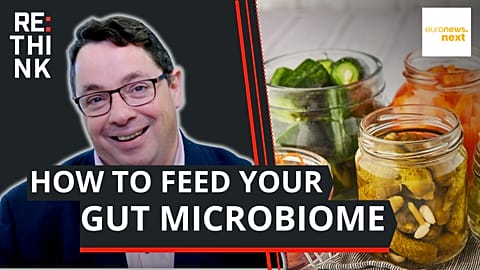Is science finally giving female sexual and reproductive organs the attention they deserve? Author Rachel E Gross set out to narrow the knowledge gap.
After getting a mystery vaginal infection and being misdiagnosed several times, science journalist and author Rachel E Gross was prescribed a new treatment by her gynaecologist.
The treatment was boric acid and it came with an unusual warning. "If you look it up on the internet, you’ll find that it’s used in rat poison, so I’m just going to tell you now," said Gross's doctor.
In fact, boric acid is a very ineffective way to kill rats but it is an efficient insecticide against spiders, ticks, mites and other similar creepy crawlies.
So, why on earth is it being used on vaginas?
"We don't really know how this works. It might not help you," the doctor added.
"That experience made me really think," Gross told Euronews Next during her interview for the latest episode of Rethink.
"About how little I knew about my body, how little medicine knew about the female body—that we were still using literal rat poison to solve very common vaginal infections - and it sent me on this journey to find out why we have these enormous knowledge gaps, about half the people on Earth".
A history of sexist science and its modern-day impact
So, Gross set about researching and writing her book Vagina Obscura where she examines the history and research (or lack thereof) surrounding this part of the female anatomy, much of which stems from centuries of sexism and bias in science and medicine.
"These old anatomists were really invested in the differences between men and women," explained Gross. "They saw the female body as sort of this inferior, inside-out version of the male… The uterus was seen as an inside-out penis and the ovaries were seen as internal testicles".
For centuries scientists and doctors have focused on the male body and on the rare occasions they studied female sexual and reproductive organs, it was most often in the context of pregnancy, entirely avoiding parts of the anatomy that didn’t have a direct role in making babies.
These sexist notions and the resulting knowledge gap have had drastic consequences, not just on the way we view the female body as a society but directly on women’s health.
For example, endometriosis is a disease that impacts one in ten people with a uterus worldwide, according to the World Health Organization (WHO). It can give people with the condition chronic, severe pain and potentially cause infertility.
However, for many years endometriosis was treated as a non-issue. Sufferers were told that it was normal for women to experience pain during their periods and the disease was referred to as the "career woman's disease," believed to afflict women pursuing their careers over marriage and pregnancy.
"That goes all the way back to the idea of the wandering womb and hysteria," said Gross. "That women were supposed to be in the home getting pregnant, and if not, they would be kind of punished with disease".
Until recently many doctors still recommended getting pregnant as a treatment for endometriosis or prescribed strong hormonal drugs which caused a lot of side effects.
"Because they weren't looking at this as just another biological condition rather than some mythical women's disease, they weren't finding other options to treat it that were better and less harmful for the people suffering," Gross added.
The vulva: The forgotten parts of female anatomy
During her investigations, Gross noticed a particularly glaring lack of research into the external female genitalia, the vulva.
"Doctors basically just skip or ignore most of the vulva, which is all the external genitals, where a lot of conditions can arise, where a lot of sexual problems can be happening. So, tonnes and tonnes of people never get any treatment or attention to this part of their body," said Gross.
"And I think no part of the body has been more misunderstood than the clitoris," she added. "When it wasn't being totally omitted from textbooks, it was being described as like a pea-sized nub or like a tiny phallus, like a tiny, inferior version of the penis".
In recent years, scientists have found that the reality is far from that. The clitoris is in fact an extensive structure, up to 10cm in size, made of erectile tissue which swells and grows when aroused.
This lack of knowledge about the external genitalia can have a damaging effect on patients and treatment options and in particular puts intersex and trans people at risk of harm.
"Even today, there are many surgeries that haven't taken into account the impact on someone's sex life and sensation and so people are risking their sexual sensation, risking pain and scarring because of medicine's huge knowledge gap," explains Gross.
"As we begin to care about sexual health and to understand more deeply the anatomy of this part of the body, we can prevent a lot of that harm from happening. We can recognise that these are not just little snips or minor surgeries. They have a deep impact on someone's life".
Shedding new light on the ovaries and uterus
One part of the female anatomy that most of us are taught about in school is the ovaries.
The majority of us learn that a girl is born with all the eggs she will ever have. That these eggs are kept in the ovaries where starting from puberty, one is released every month during the ovulation cycle.
This cycle goes on over the years, with the number of eggs slowly depleting, until menopause by which time there are no eggs left.
A version of that information is taught all over the globe, however, Gross points out that our understanding of the ovaries has really grown in recent years thanks to new research.
"So, for about 20 years, scientists have been looking in the ovaries and finding stem cells, these regenerative pluripotent cells that can grow and develop into specialised cells and some of them can turn into new eggs, it turns out," she said.
While research is still ongoing into the ovaries' ability to produce new eggs, the new findings are already starting to make their way into textbooks and course material.
And it’s not just the ovaries, modern science is also looking at the uterus in a new light. Originally viewed simply as the organ of pregnancy, medical research is now studying the uterus for its regenerative properties.
"So, every single month for most people with a uterus, you're producing an entirely new lining. So new cells are forming, there are stem cells doing their thing… Researchers are now looking at it as one of the most regenerative organs in the body and a form of scarless wound healing that could teach us more about healing in general, about immunity, and about processes that involve stem cells, bone marrow, immune cells," said Gross.
"So, they're looking at the uterus as this scientific opportunity… Something that we can learn from to understand all bodies better".
The future of women’s healthcare
According to Gross, greater diversity in science and medicine has really helped push forward some of these changes in attitude and research, "women, people of colour, LGBTQ people, by virtue of their own experiences, are seeing gaps that previous white male scientists have not and they're asking new questions".
It all sounds really promising but does it really translate into better treatment and care for people? Gross believes it’s a start but that there’s still a way to go.
"I think at a structural level, we need to invest research dollars in this before we can see the fruits of that... And to trust that people with these bodies matter, they matter whether or not they're getting pregnant".


















